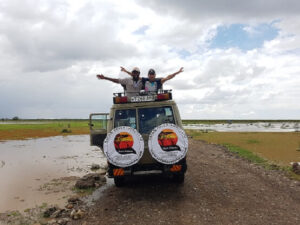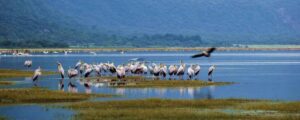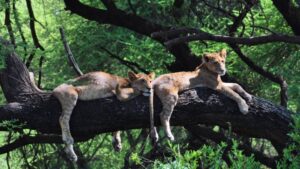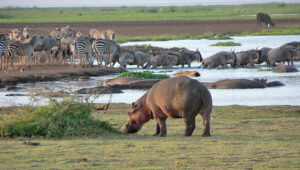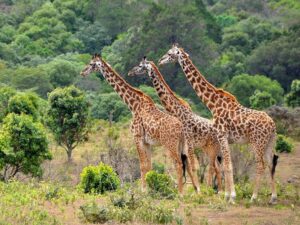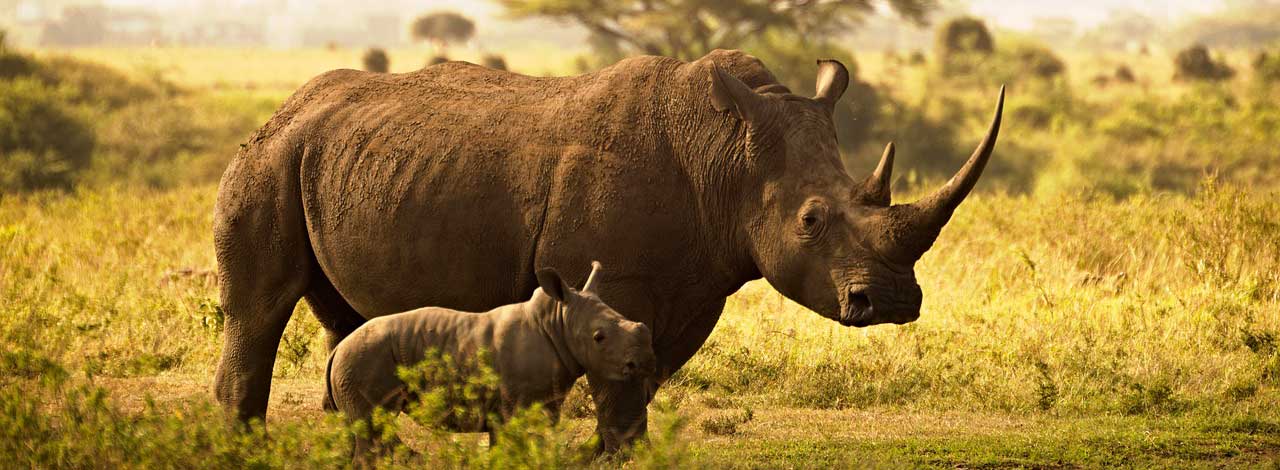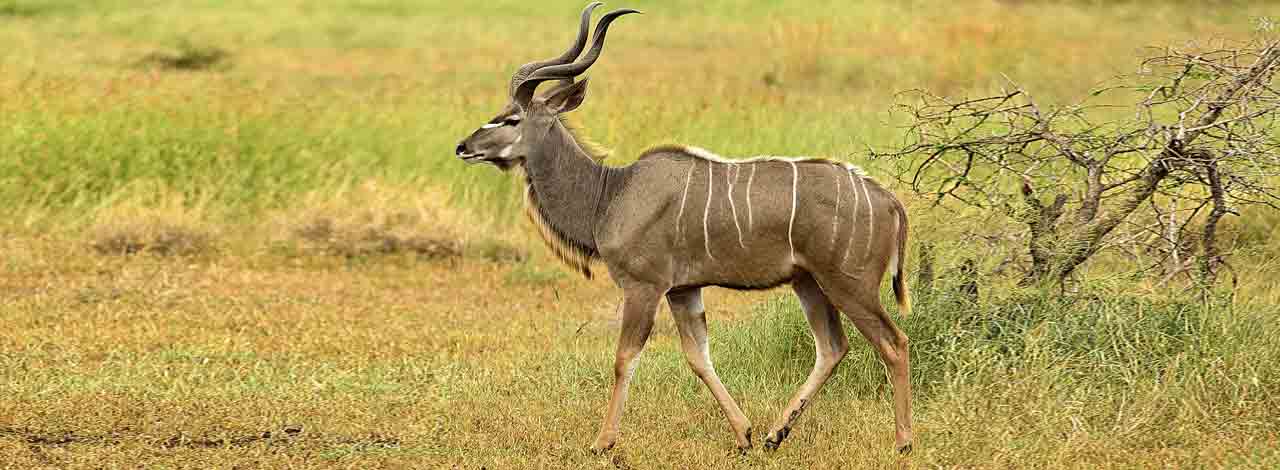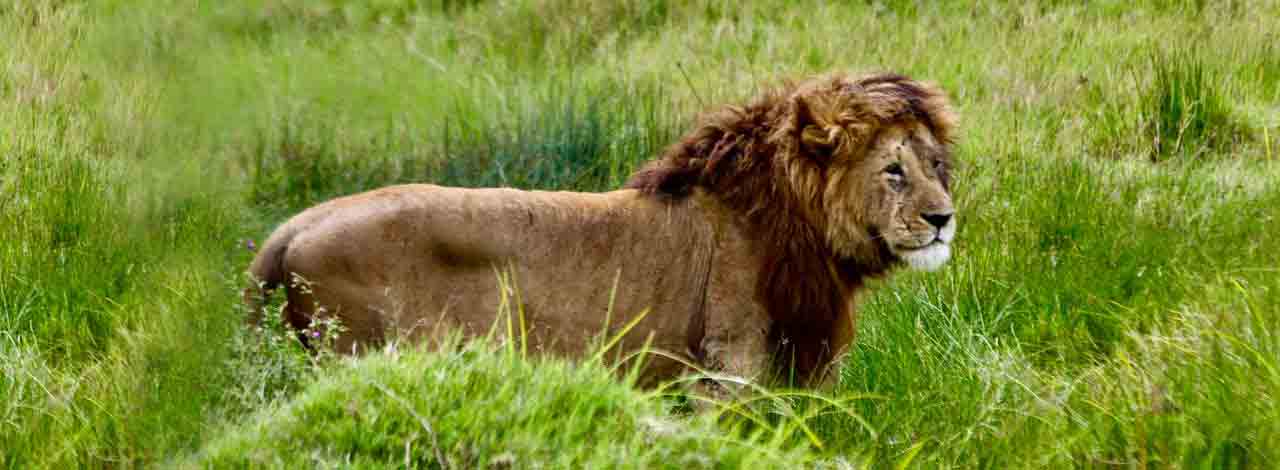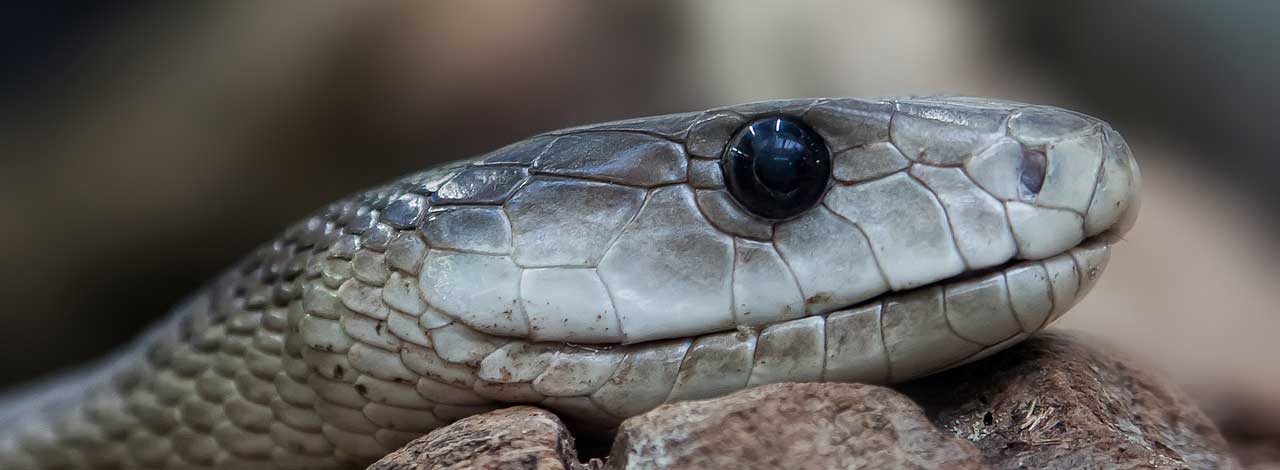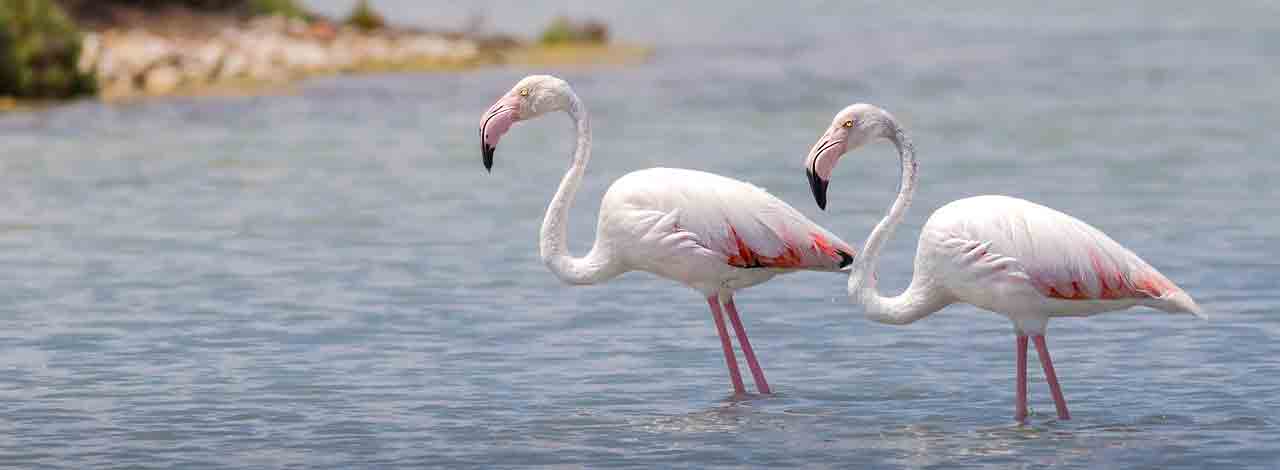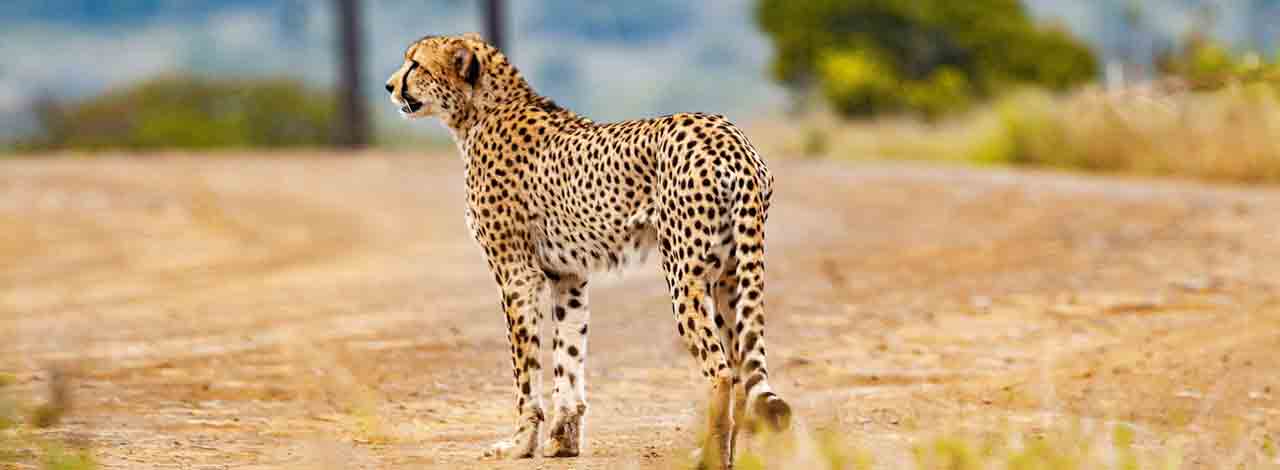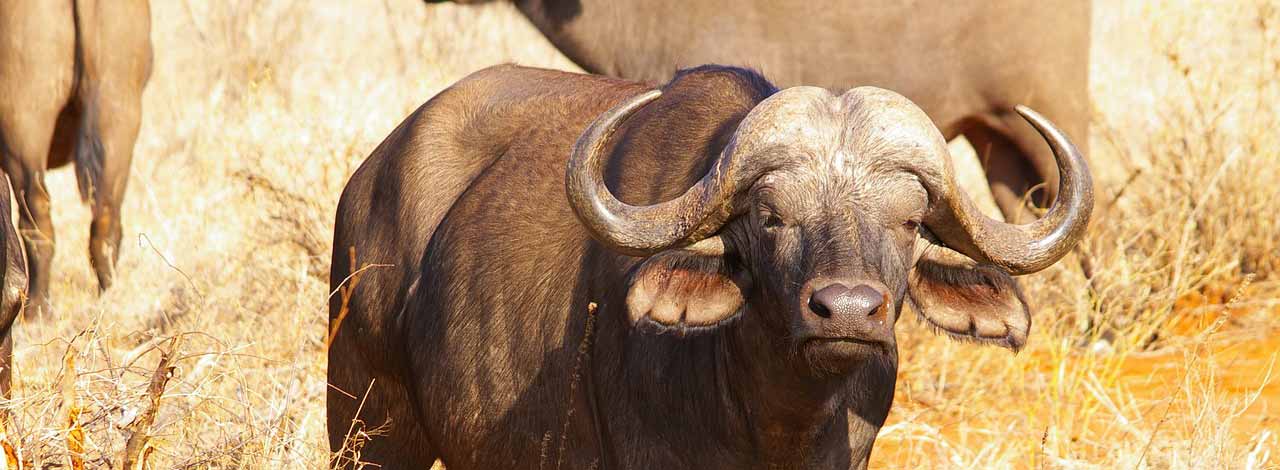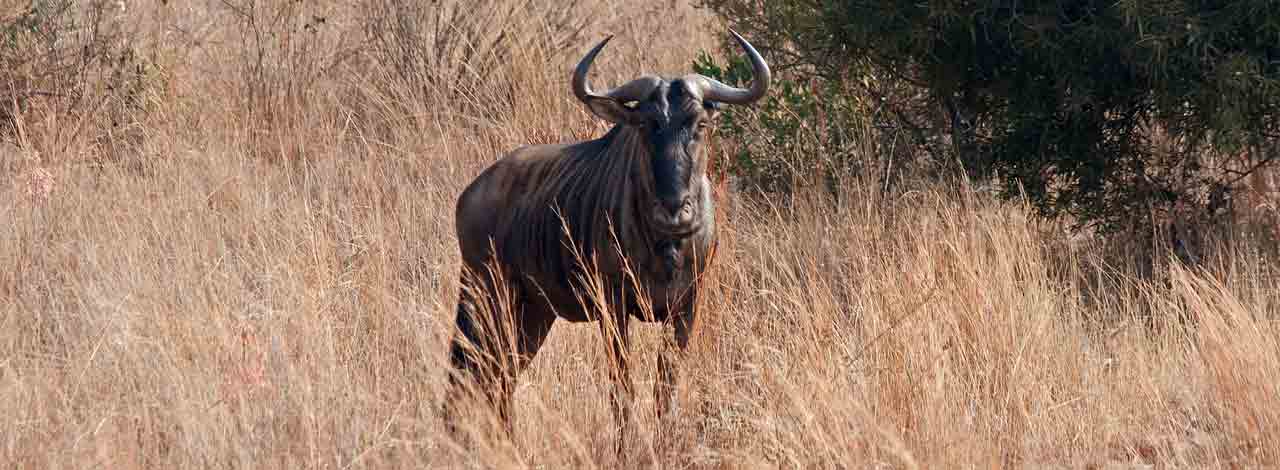Lake Manyara National Park is a small (only 330 sq. km) and charming park in Tanzania, declared a World Heritage Site in 1981.
Despite its modest size, considering that most of it is occupied by the waters of the lake, it is one of the Tanzania’s most biodiverse parks, boasting 5 different interrelated ecosystems, making it a wonderful destination for safaris.
Features of Lake Manyara National Park
The landscape is so varied and rich in fauna that it enchants the eyes of the observer, to the point where it was chosen in the past as the set for the first Tarzan films, and Hemingway himself described it as the most beautiful park in Africa.
Soon after entering the park, despite the low rainfall in the area, you find yourself immersed in a lush rainforest characterized by large trees of mahogany, tamarind, ficus and others, fuelled by a series of underground springs flowing through the permeable volcanic soil.
The area is inhabited by various animals, such as giraffes, elephants, antelopes, large groups of baboons and curious diademed cercopithecus. The baboons in particular, although present in many parks in Tanzania, are quite numerous and easy to approach here; on the contrary they will move away very slowly when met on the dirt road.
 Flora and Fauna of Manyara Park
Flora and Fauna of Manyara Park
Approaching the lake, the forest branches off, leaving room for small savannahs populated by giraffes, warthogs, wildebeests, zebras and buffaloes. You then get to the shore of the lake, a flat expanse of land, with lake settings, marshes, and reed beds, where lazy hippos rest all day almost completely immersed in the water, and hundreds of colourful migratory birds, such as pelicans, flamingos, herons, glossy ibis and ducks, occupy the water.
It is possible to see hippos much more closely in this park than in others, thanks also to the presence of wooden piers above the lake, where you can take a walk, completely immersed in nature and becoming an integral part of it.
Further on, the route is reduced to an evocative small strip of land surrounded by the lagoon, the landscape is surreal, and the fauna very varied. There are especially a great number of birds here, such as blackbirds, white pelicans, huge marabous, ducks, and geese, and some large mammals such as buffaloes.
To the west of the lake, on the other hand, you find yourself on a path that separates the lake from a slope, where intense geothermal activity, present throughout the Rift Valley, has led to the formation of some sulphurous hot springs that attract many flamingos insensitive to high temperatures, which in some cases can even reach 76°C.
Finally, we cross a wooded area rich in acacia and palm trees that extends south of the forest and is traversed by several small rivers. Here you can see arboreal lions, which have a habit of climbing on the branches of acacia umbrella trees, something quite unusual for this type of feline. This area also has several giraffes that prefer to eat the leaves of the tallest and apparently unreachable thorny acacia trees.
Trivias
- Together with the Arusha National Park, Lake Manyara National Park is the second largest national park in Tanzania by date of creation, in 1960.
- With its 648 km 2 (of which only 30% is land), it is the third smallest national park in Tanzania, spanning 32 km from south to north at its widest point.
- Altitude: 960 m (Lake Manyara) to 1,600 m (highest point of the Tectonic Trench wall, south).
- The park is easily accessible by plane and through a well tarred road.
- By car: from Arusha to the village of Mto Wa Mbu (115 km/2 hours); the village is less than 2 km from the main entrance.
- By plane: several safari operators organize private flights from Arusha (the landing strip is located on the edge of the Rift Valley wall).
- Best time of year – all year round.ift Valley).
Lake Manyara is home to thousands of birds such as the pink flamingo. As soon as you see the flamingo, you will also see many crocodiles and hippos. Other birds present in this lake are storks and cormorants. The park is the perfect destination for watching different bird species.
Over 400 different types of birds have been recorded in this park. The combination of large mammals, birds, reptiles and a variety of vegetation makes the park a memorable place to visit.
There is only one lodge located on a hill within the remote corner of the park, from where you can have a clear view of the animals. Designed to reflect the brilliance of Lake Manyara, this luxurious lodge is built with spacious bedrooms, rooms, open decks, and large glazed areas.
All living rooms have comfortable cosy sofas that provide enough warmth for guests. The lodge comes with a private room where you can have a luxury massage. It features a beautiful swimming pool where you can relax after a hot day of adventure. The food here is also delicious to your taste.
The dry season is the most suitable for the best views (July to October). Visitors are guaranteed to see many species of large mammals during this period. November through June is the best period for birdwatching, waterfalls, and canoeing. Entry to the park is allowed at night but only if accompanied by your guide.
Lodging Inside the park:
There is a private lodge (south side of the park), bandas, a public campsite and several dedicated campsites (reservation is made through the park). Outside the park: there are numerous hotels and private guesthouses in the village of Mto Wa Mbu.
Things to do
Canoeing, when the water level is high enough, car safaris (day and night), hiking-safaris, birdwatching, outdoor lunches and cultural programs in Mto wa Mbu. Park contact information: lake.manyara@tanzaniaparks.com Direct line: +255 689 062 294 / +255 767 536 137

